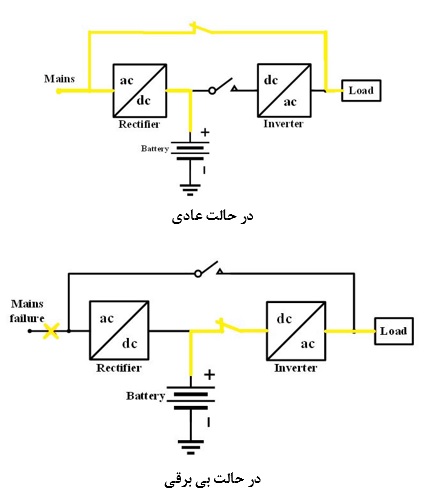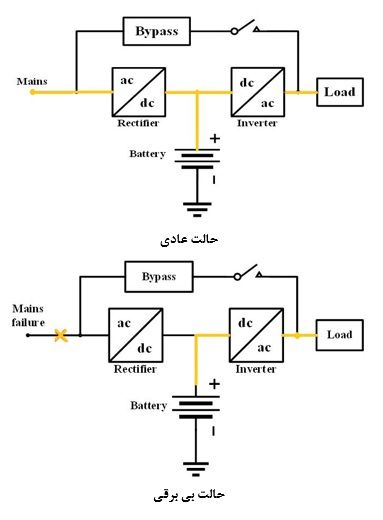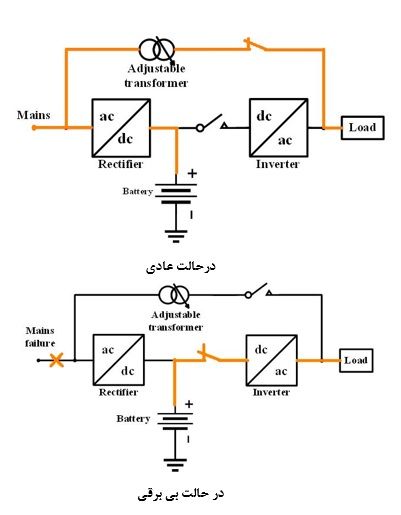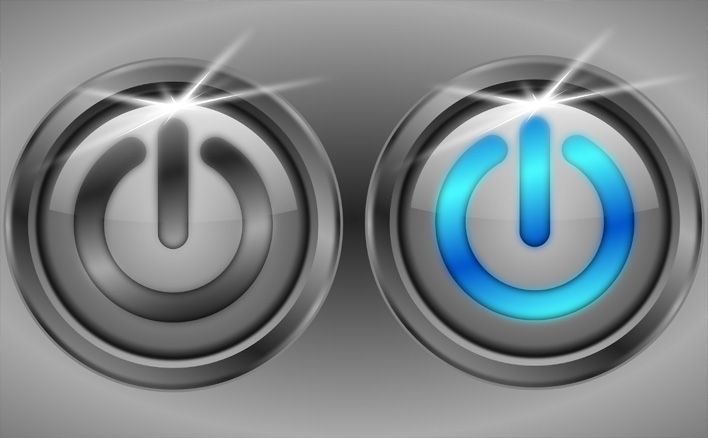Comparison of UPS models : Online vs Offline vs Line-interactive
UPS is an electronic power supply which it’s superior task is to supply the required power without interruption.
in general, there are three main categories in UPS. Online UPS vs Offline UPS vs Line-interactive UPS which all of their differences will be explained in the following.
The mentioned differences are mainly divided to 3 primary sections :
- Topologies
- Output Wave form
- Three-phase and one-phase type
In this article, we will discuss about the topologies of Offline and Online ups.
It is worth to mention, line-interactive ups is subsidiary of Offline ups.
How do online and offline UPS work and what is the main differences between them?
Which one of ups type is appropriate for me?
Pros and Cons of offline ups topology
In the offline ups topology, the consuming devices receive their power directly from the Mains, until the utility power fails. When the power is cut off, the UPS switch will immediately connect the inverter output to the critical load. although the charger and battery still remain connected to the mains power in order to ensure the battery is always fully charged.
High efficiency, affordable price, and low weight are the main advantages of this UPS. But due to the lack of electrical protection of the output loads, lack of coordination with the diesel generator and electric motor, and the non-sine output voltage, which is unsuitable for feeding the medical equipment.
You can see the operation of the offline UPS in normal and power-out mode in the following :

There are also other factors that may cause we shouldn’t have high-level expectations from offline-ups. For instance, in offline ups The load is continuously exposed to spikes, transients, and any other aberrations coming down the power line, resulting in the risk of loss or damage to sensitive equipment and data. Besides, transfer time from mains power to the inverter is limited when the mains power supply fails
Pros and Cons of Online ups topology
The function of online UPS is that initially the mains is rectified by the rectifier of the device and turns into DC and charges the batteries. Then it is converted back into 220V AC by the inverter which is active at any time and provides requested power for the protected equipment.
The most important difference between the online type and the other types is that the online UPS is suitable when the protection of the device matters. Since An online UPS uses a “double conversion” method of accepting AC input, No fluctuations in the mains voltage can be harmful to the consumer devices.
In Online UPS, the quality of the output power is at a very acceptable level and has higher reliability than other types.
You can see the operation of the online UPS in normal and power-out mode in the following :

Line-interactive ups
In the interactive UPS line, the input and output connection is set through an autotransformer with the ability to adjust the voltage range. In the meantime, batteries are being on charge.
In case of power failure, the battery feeds the output loads through the inverter.
Pros and Cons of Line-interactive ups topology
In line-interactive UPS, there isn’t any possibility to adjust the frequency and the output waveform, and only the range of the input voltage can be adjusted. for this reason, it is unsuitable for sensitive devices. It is worth to mention that the output waveform of Line-Interactive UPS is sinusoidal in some models and square in others.
You can see the operation of the line-interactive UPS in normal and power-out mode in the following :

In this article, the main differences between UPS was discussed. For a consultation, please refer to the contact page. Our sale experts will help you to choose the best type of UPS.
To get informed about prices and purchase desired type of UPS, visit the store section of the site.




